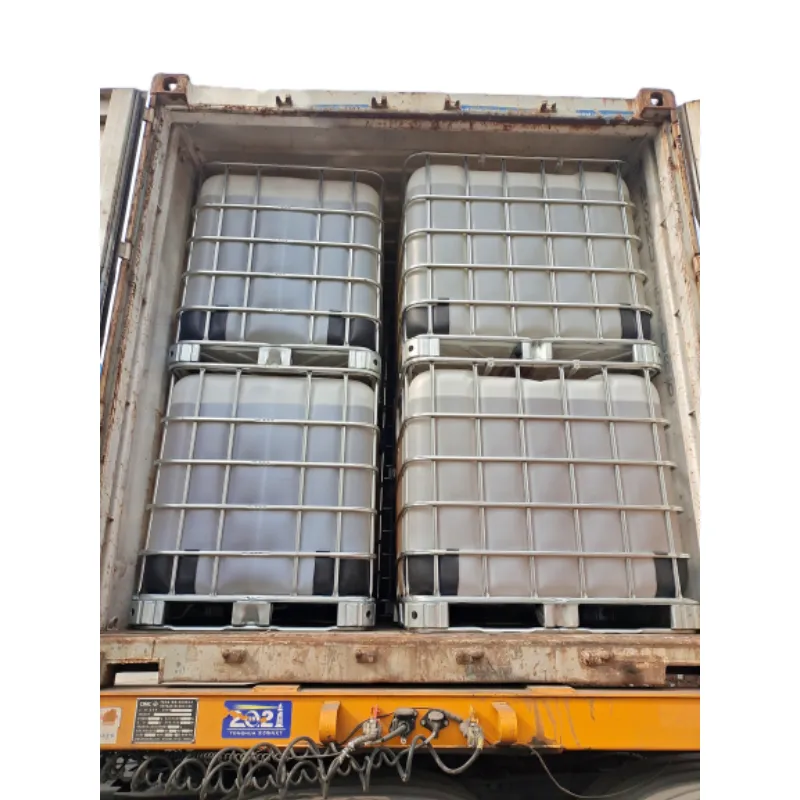
Glacial Acetic Acid 99% Purity for Laboratory and Industrial Applications
Understanding Glacial Acetic Acid Composition, Properties, and Applications
Glacial acetic acid, often referred to as ethanoic acid, is a colorless, pungent liquid that serves as a vital reagent and solvent in many chemical processes. With a purity level typically around 99%, it is recognized for its high concentration and is an important material in both industrial and laboratory settings.
Chemical Composition and Properties
The chemical formula of acetic acid is CH₃COOH, indicating that it consists of two carbon atoms, four hydrogen atoms, and two oxygen atoms. At a temperature lower than 16.6 °C (62 °F), it solidifies to form a crystalline solid, hence the term glacial. The term glacial acetic acid thus references both its physical state and the exceptional purity associated with it. Given its high concentration, glacial acetic acid is an important substance for chemical synthesis, where only the purest form is required to ensure high yield and quality.
Due to its high boiling point (approximately 118 °C or 244 °F) and strong acidity (pKa value of about 4.75), glacial acetic acid is classified as a weak acid. Despite its classification, it can be aggressive and corrosive under certain conditions, necessitating careful handling and storage. It is miscible with water in all proportions, and this property is essential for its numerous applications across various sectors.
Industrial Applications
Glacial acetic acid is primarily used in the production of vinegar as well as in the manufacture of various key chemical compounds. One of the most significant derivatives is acetate, used in the production of plastics such as cellulose acetate, used in photographic films and as a fiber in textiles. Additionally, it plays a crucial role in the synthesis of acetic anhydride and acetate esters, which have further applications in industrial processes.
The chemical industry also utilizes glacial acetic acid as a solvent due to its ability to dissolve a wide range of organic substances. It is widely employed in the production of synthetic fibers, particularly rayon, and in the manufacturing of various pharmaceuticals. Its role in the field of organic chemistry is indispensable, as it is involved in reactions such as esterification, where it combines with alcohols to form esters.
acetic acid glacial 99 100

Laboratory Uses
In laboratory settings, glacial acetic acid is often utilized as a solvent for chemical reactions due to its high purity. Researchers use it for titrations and as a reagent in organic synthesis. Its ability to participate in various reactions makes it a valuable asset for chemists working on synthesizing new compounds or products.
Additionally, in histology, glacial acetic acid is used as a fixing agent, especially in staining procedures. Its applicability in laboratories highlights its importance not only in commercial industrial uses but also in academic and research environments.
Safety Considerations
Handling glacial acetic acid requires precautionary measures. Being a corrosive substance, it can cause severe burns on contact with skin or eyes and can be dangerous when inhaled. Therefore, personal protective equipment (PPE) such as gloves, goggles, and lab coats should always be worn when working with this chemical. Adequate ventilation is also essential to minimize inhalation risks.
In case of spills or exposure, immediate action should be taken to neutralize the acid and ensure safety. Understanding the properties and risks associated with glacial acetic acid is crucial for anyone working with this chemical to ensure a safe working environment.
Conclusion
In conclusion, glacial acetic acid serves as an invaluable chemical with expansive use across various industries and laboratories. Its exceptional properties—high concentration, strong acidity, and ability to act as a solvent—contribute to its versatility. As a reagent in chemical synthesis, it plays a significant role in the creation of an array of products, from pharmaceuticals to textiles. However, the importance of safety in handling and using glacial acetic acid cannot be understated. With appropriate precautions and understanding, the utility of this compound can be maximized, driving innovation and development in scientific and industrial fields alike.
-
Pure Sodium Dichloroisocyanurate Dihydrate | Powerful DisinfectantNewsAug.29,2025
-
Industrial Chemicals: Quality & Purity for Every IndustryNewsAug.28,2025
-
Nitrile Rubber Honoring Strict Production StandardsNewsAug.22,2025
-
Aspartame Ingredients Honoring Food Safety ValuesNewsAug.22,2025
-
Fertilizer for Balanced Plant NutritionNewsAug.22,2025
-
Cyanide Gold Processing with High Purity AdditivesNewsAug.22,2025
-
Formic Acid in Textile Dyeing ApplicationsNewsAug.22,2025
Hebei Tenger Chemical Technology Co., Ltd. focuses on the chemical industry and is committed to the export service of chemical raw materials.
-

view more DiethanolisopropanolamineIn the ever-growing field of chemical solutions, diethanolisopropanolamine (DEIPA) stands out as a versatile and important compound. Due to its unique chemical structure and properties, DEIPA is of interest to various industries including construction, personal care, and agriculture. -

view more TriisopropanolamineTriisopropanolamine (TIPA) alkanol amine substance, is a kind of alcohol amine compound with amino and alcohol hydroxyl, and because of its molecules contains both amino and hydroxyl. -

view more Tetramethyl Thiuram DisulfideTetramethyl thiuram disulfide, also known as TMTD, is a white to light-yellow powder with a distinct sulfur-like odor. It is soluble in organic solvents such as benzene, acetone, and ethyl acetate, making it highly versatile for use in different formulations. TMTD is known for its excellent vulcanization acceleration properties, which makes it a key ingredient in the production of rubber products. Additionally, it acts as an effective fungicide and bactericide, making it valuable in agricultural applications. Its high purity and stability ensure consistent performance, making it a preferred choice for manufacturers across various industries.





